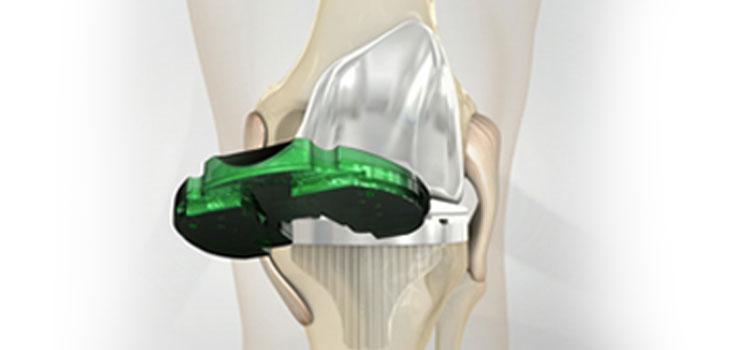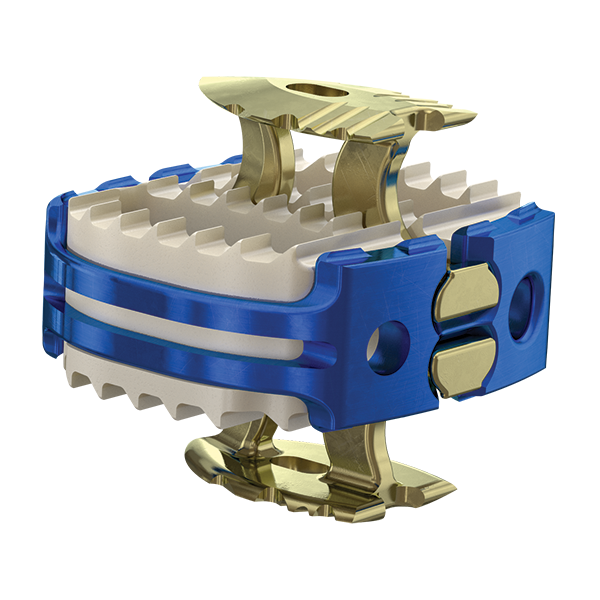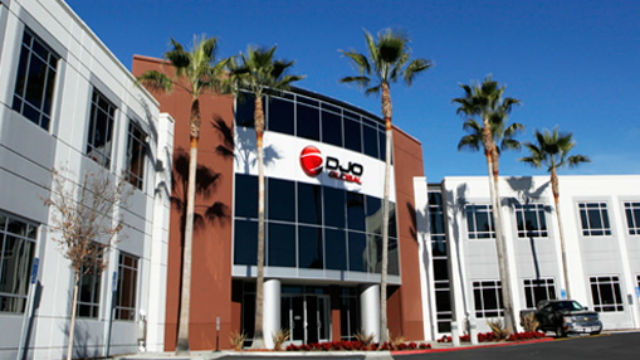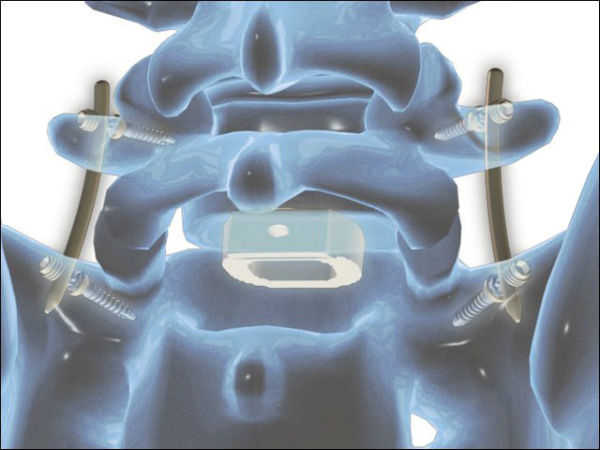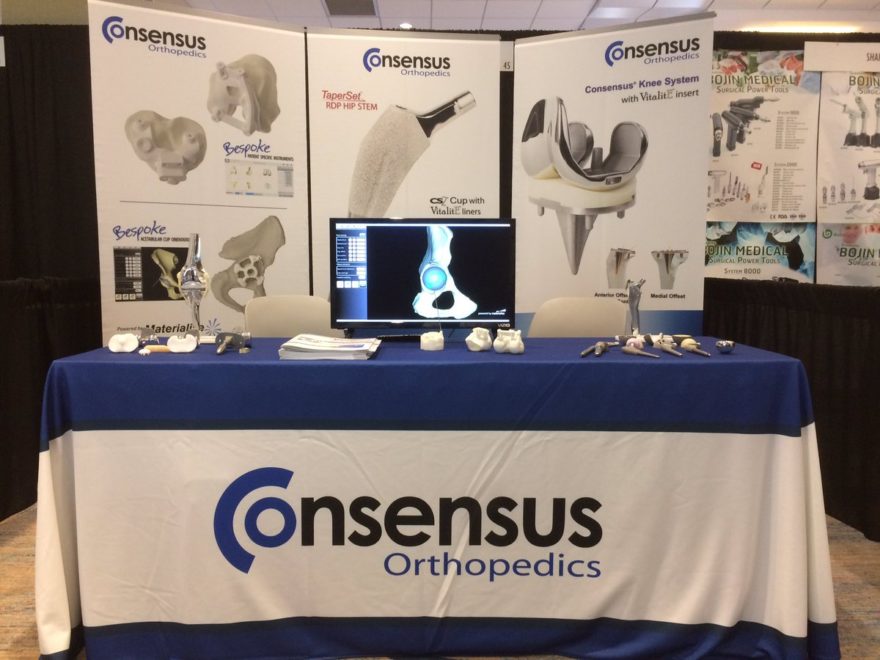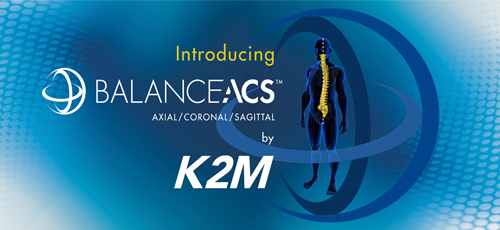Fourth Quarter 2016 Highlights:
- Consolidated total revenue increased 9.9% to a record $24.5 million compared to fourth quarter 2015 revenue of $22.3 million
- Consolidated gross profit increased 17.4% to $17.5 million compared to fourth quarter 2015 gross profit of $14.9 million
- Consolidated gross margins improved to 71.6%, compared to 67.0% reported in the fourth quarter of 2015
Full-Year 2016 Highlights:
- Consolidated gross profit increased 10.1% to $62.3 million compared to pro forma 2015 gross profit of $56.6 million
- Consolidated gross margins for the year were 69.2%, compared to pro forma 2015 gross margin of 65.4%
BELGRADE, Mont., March 09, 2017 (GLOBE NEWSWIRE) — Xtant™ Medical Holdings, Inc. (NYSE MKT:XTNT), a leader in the development of regenerative medicine products and medical devices, today reported its financial results for the period ended December 31st, 2016. The Company reported annual revenues of approximately $90.0 million and a net loss for the year of approximately $19.5 million.
Revenue
Consolidated fourth quarter 2016 revenue was approximately $24.5 million, an increase of 9.9% compared to revenue of approximately $22.3 million for the same period during 2015.
Consolidated revenue for the full year 2016 was approximately $90.0 million, compared to pro forma 2015 revenue of approximately $86.5 million, representing an increase of 4.0% over the prior year.
Gross Profit
Consolidated gross profit for the fourth quarter of 2016 was $17.5 million or 71.6% of revenues, compared to gross profit of $14.9 million or 67.0% of revenues for the fourth quarter of 2015.
For the year, gross profit was approximately $62.3 million, compared with pro forma 2015 gross profit of $56.6 million. Gross margin for the year was 69.2%, compared to 2015 pro forma gross margin of 65.4%
Sales and Marketing Expenses
Consolidated fourth quarter 2016 sales and marketing expenses increased to $11.9 million, as compared to sales and marketing expenses of $10.6 million during the same period in 2015. For the quarter, sales and marketing as a percentage of revenues increased slightly to 48.8%, compared to 47.6% in the fourth quarter of 2015.
For the year, sales and marketing expenses increased to $44.1 million for 2016, as compared to pro forma 2015 sales and marketing expenses of $39.3 million. As a percentage of revenues, sales and marketing expenses increased to 48.9% compared to 45.5% reported for the pro forma full year 2015.
General and Administrative Expenses
In the fourth quarter, consolidated general and administrative expenses remained flat at $4.5 million as compared to general and administrative expenses of $4.2 million reported for the same period last year. As a percentage of revenues, general and administrative expenses were 18.3% during the period as compared to 18.9% for the same period during 2015.
2016 general and administrative expenses decreased to $15.8 million as compared with $16.6 million reported for the pro forma period last year. As a percentage of revenues, general and administrative expenses were 17.5% as compared to 19.2% for 2015.
Net Income / Loss
The fourth quarter 2016 consolidated net loss was $4.5 million, compared to the same period a year-ago net income of $11.6 million. The decrease was primarily due to a one-time recording of a deferred tax benefit of $17.5 million that occurred during the fourth quarter 2015.
The fourth quarter 2016 consolidated loss per share of $0.31 compared to earnings per share of $0.97 in the fourth quarter of 2015.
For the full-year 2016, the Company had a net loss of $19.5 million compared to a pro forma net loss of $5.8 million for 2015. Net loss per share for the full-year 2016 was $1.54 a share compared to pro forma net loss per share of $0.65 for 2015.
EBITDA
The Company defines earnings before interest, taxes, depreciation and amortization (“EBITDA”) as net income/loss from operations before depreciation, amortization, impairment charges, non-recurring expenses and non-cash stock-based compensation. Consolidated EBITDA for the fourth quarter of 2016 was a gain of $1.2 million compared to a loss of $350,000 for the same period during 2015.
Full year 2016 EBITDA was a gain of $2.0 million compared to a zero pro forma loss in the prior year.
Financial Liquidity
Cash on hand as of December 31, 2016, was $2.6 million, as compared to $6.4 million as of December 31, 2015. Net working capital as of December 31, 2016 decreased $5.7 million to $17.9 million, as compared to $23.6 million as of December 31, 2015.
Outlook for Full Year 2017
The Company plans to have an immediate focus on operational and cash flow efficiencies throughout 2017. As a result, we have reduced revenue guidance while expanding projected EBITDA margins as we get to the latter part of 2017. The Company’s revised full year 2017 revenue and EBITDA guidance is based on the following:
| Stated in 000’s | FY ’15* | FY ’16 | 2017 Guidance | |||||
| Revenue | $ | 86,518 | $ | 90,003 | $96,000 – $98,000 | |||
| Growth | 4 | % | 6.7% – 8.9% | |||||
| EBITDA | $ | (33 | ) | $ | 2,050 | $6,900 – $7,700 | ||
| *Pro forma results | ||||||||
Conference Call to be Held March 10, 2017
An accompanying listen-only conference call will be hosted by Carl O’Connell, Chief Executive Officer, and John Gandolfo, Chief Financial Officer, to discuss the results. The call will be held at 10:00 AM ET, on March 10, 2017. Please refer to the information below for conference call dial-in information and webcast registration.
Conference date: March 10, 2017, 10:00 AM ET
Conference dial-in: 877-269-7756
International dial-in: 201-689-7817
Conference Call Name: Xtant Medical’s Fourth Quarter 2016 Results Call Webcast Registration: Click Here
Following the live call, a replay will be available on the Company’s website, www.xtantmedical.com, under “Investor Info.”
Use of Pro Forma Financial Information
On July 31,2015, Bacterin International Holdings, Inc. acquired all of the issued and outstanding stock of X-Spine Systems, Inc. and the combined company was renamed Xtant Medical Holdings, Inc. Except for the financial results for the three months ended December 31, 2015, the results presented for the full 2015 year are on a pro forma basis as if the two companies were combined for the periods shown. Certain pro forma adjustments have been made to reflect the impact of the purchase transaction, primarily consisting of amortization of intangible assets with determinable lives and interest expense on long-term debt. In addition, certain historical expenses, such as warrant expense and interest expense associated with debt that was immediately repaid, were eliminated from these pro-forma results. The pro forma information does not necessarily reflect the actual results of operations had the acquisition been consummated at the beginning of the fiscal reporting period indicated nor is it indicative of future operating results. The pro forma information does not include any adjustment for potential revenue enhancements, cost synergies or other operating efficiencies that could result from the acquisition.
Additional information regarding the business combination and its impact on the Company’s financial position will be set forth in the Company’s Form 10-K for the fiscal year ended December 31, 2016, which will be filed with the Securities and Exchange Commission on or about March 30, 2017 and will include the Company’s audited consolidated financial statements as of and for the years ended December 31, 2016 and December 31, 2015
About Xtant™ Medical Holdings, Inc.
Xtant Medical Holdings, Inc. (NYSE MKT:XTNT) develops, manufactures and markets class-leading regenerative medicine products and medical devices for domestic and international markets. Xtant products serve the specialized needs of orthopedic and neurological surgeons, including orthobiologics for the promotion of bone healing, implants and instrumentation for the treatment of spinal disease, tissue grafts for the treatment of orthopedic disorders, and biologics to promote healing following cranial, and foot and ankle surgeries. With core competencies in both biologic and non-biologic surgical technologies, Xtant can leverage its resources to successfully compete in global neurological and orthopedic surgery markets. For further information, please visit www.xtantmedical.com.
Important Cautions Regarding Forward-looking Statements
This press release contains certain disclosures that may be deemed forward-looking statements within the meaning of the Private Securities Litigation Reform Act of 1995 that are subject to significant risks and uncertainties. Forward-looking statements include statements that are predictive in nature, that depend upon or refer to future events or conditions, or that include words such as “continue,” “efforts,” “expects,” “anticipates,” “intends,” “plans,” “believes,” “estimates,” “projects,” “forecasts,” “strategy,” “will,” “goal,” “target,” “prospects,” “potential,” “optimistic,” “confident,” “likely,” “probable” or similar expressions or the negative thereof. Statements of historical fact also may be deemed to be forward-looking statements. We caution that these statements by their nature involve risks and uncertainties, and actual results may differ materially depending on a variety of important factors, including, among others: the Company’s ability to successfully integrate the acquisition of X-spine; the ability of the Company’s sales force to achieve expected results; the Company’s ability to meet its existing and anticipated contractual obligations, including financial covenant and other obligations contained in the Company’s secured lending facility; the Company’s ability to manage cash flow; the Company’s ability to develop, market, sell and distribute desirable applications, products and services and to protect its intellectual property; the ability of the Company’s customers to pay and the timeliness of such payments; the Company’s ability to obtain financing as and when needed; changes in consumer demands and preferences; the Company’s ability to attract and retain management and employees with appropriate skills and expertise; the impact of changes in market, legal and regulatory conditions and in the applicable business environment, including actions of competitors; and other factors. Additional risk factors are listed in the Company’s Annual Report on Form 10-K and Quarterly Reports on Form 10-Q under the heading “Risk Factors.” The Company undertakes no obligation to release publicly any revisions to any forward-looking statements to reflect events or circumstances after the date hereof or to reflect the occurrence of unanticipated events, except as required by law.
| XTANT MEDICAL HOLDINGS, INC. | |||||||||||||||||||||||||||||||||
| Condensed Consolidated Statements of Operations | |||||||||||||||||||||||||||||||||
| Unaudited Actual and Proforma Results | |||||||||||||||||||||||||||||||||
| For the Three Months Ended December 31, | For the Year Ended December 31, | ||||||||||||||||||||||||||||||||
| 2016 Unaudited | 2015 Unaudited | 2016 Unaudited | 2015 Pro Forma | ||||||||||||||||||||||||||||||
| % of | % of | % of | % of | ||||||||||||||||||||||||||||||
| Amount | Revenue | Amount | Revenue | Amount | Revenue | Amount | Revenue | ||||||||||||||||||||||||||
| Orthopedic Product Sales | $ | 24,362,237 | 99.6 | % | $ | 21,771,750 | 97.8 | % | $ | 89,388,145 | 99.3 | % | $ | 85,235,170 | 98.5 | % | |||||||||||||||||
| Other | 108,621 | 0.4 | % | 494,072 | 2.2 | % | 614,591 | 0.7 | % | 1,282,429 | 1.5 | % | |||||||||||||||||||||
| Total Revenue | 24,470,858 | 100.0 | % | 22,265,822 | 100.0 | % | 90,002,736 | 100.0 | % | 86,517,599 | 100.0 | % | |||||||||||||||||||||
| Cost of sales | 6,960,634 | 28.4 | % | 7,353,446 | 33.0 | % | 27,710,014 | 30.8 | % | 29,913,686 | 34.6 | % | |||||||||||||||||||||
| Gross Profit | 17,510,223 | 71.6 | % | 14,912,376 | 67.0 | % | 62,292,722 | 69.2 | % | 56,603,913 | 65.4 | % | |||||||||||||||||||||
| Operating Expenses | |||||||||||||||||||||||||||||||||
| General and administrative | 4,484,419 | 18.3 | % | 4,201,394 | 18.9 | % | 15,762,531 | 17.5 | % | 16,612,883 | 19.2 | % | |||||||||||||||||||||
| Sales and marketing | 11,940,049 | 48.8 | % | 10,607,475 | 47.6 | % | 44,055,813 | 48.9 | % | 39,334,250 | 45.5 | % | |||||||||||||||||||||
| Research and development | 798,198 | 3.3 | % | 1,027,166 | 4.6 | % | 3,410,600 | 3.8 | % | 3,840,958 | 4.4 | % | |||||||||||||||||||||
| Depreciation and amortization | 1,250,436 | 5.1 | % | 2,019,258 | 9.1 | % | 4,940,955 | 5.5 | % | 6,220,316 | 7.2 | % | |||||||||||||||||||||
| Acquisition and Integration related expenses | 131,755 | 0.5 | % | 1,079,236 | 4.8 | % | 1,401,367 | 1.6 | % | 4,935,755 | 5.7 | % | |||||||||||||||||||||
| Gain from the Extinguishment of Debt | 0 | 0.0 | % | 0 | 0.0 | % | 0 | 0.0 | % | (2,345,019 | ) | -2.7 | % | ||||||||||||||||||||
| Impairment of Assets | 0 | 0.0 | % | 0 | 0.0 | % | 0 | 0.0 | % | 233,748 | 0.3 | % | |||||||||||||||||||||
| Non-cash consulting | 0 | 0.0 | % | 55,296 | 0.2 | % | 266,721 | 0.3 | % | 246,165 | 0.3 | % | |||||||||||||||||||||
| Total Operating Expenses | 18,604,856 | 76.0 | % | 18,989,824 | 85.3 | % | 69,837,986 | 77.6 | % | 69,079,056 | 79.8 | % | |||||||||||||||||||||
| Net Gain (Loss) from Operations | (1,094,633 | ) | -4.5 | % | (4,077,448 | ) | -18.3 | % | (7,545,264 | ) | -8.4 | % | (12,475,142 | ) | -14.4 | % | |||||||||||||||||
| Other Income (Expense) | |||||||||||||||||||||||||||||||||
| Interest expense | (3,287,855 | ) | -13.4 | % | (2,802,807 | ) | -12.6 | % | (12,262,750 | ) | -13.6 | % | (10,948,845 | ) | -12.7 | % | |||||||||||||||||
| Change in warrant derivative liability | 0 | 0.0 | % | 348,943 | 1.6 | % | 716,738 | 0.8 | % | 270,020 | 0.3 | % | |||||||||||||||||||||
| Non-cash consideration associated with stock purchase agreement | 0 | 0.0 | % | 0 | 0.0 | % | 0 | 0.0 | % | (558,185 | ) | -0.6 | % | ||||||||||||||||||||
| Other income (expense) | (103,990 | ) | -0.4 | % | 582,123 | 2.6 | % | (351,914 | ) | -0.4 | % | 395,006 | 0.5 | % | |||||||||||||||||||
| Total Other Income (Expense) | (3,391,845 | ) | -13.9 | % | (1,871,740 | ) | -8.4 | % | (11,897,926 | ) | -13.2 | % | (10,842,004 | ) | -12.5 | % | |||||||||||||||||
| Net Gain (Loss) from Operations Before Benefit (Provision) for Income Taxes | (4,486,478 | ) | -18.3 | % | (5,949,188 | ) | -26.7 | % | (19,443,190 | ) | -21.6 | % | (23,317,146 | ) | -27.0 | % | |||||||||||||||||
| Benefit (Provision) for Income Taxes | |||||||||||||||||||||||||||||||||
| Current | (50,362 | ) | -0.2 | % | 0 | 0.0 | % | (50,362 | ) | -0.1 | % | (65,387 | ) | -0.1 | % | ||||||||||||||||||
| Deferred | 0 | 0.0 | % | 17,537,408 | 78.8 | % | 0 | 0.0 | % | 17,537,408 | 20.3 | % | |||||||||||||||||||||
| Net Income (Loss) | $ | (4,536,840 | ) | -18.5 | % | $ | 11,588,220 | 52.0 | % | $ | (19,493,552 | ) | -21.7 | % | $ | (5,845,125 | ) | -6.8 | % | ||||||||||||||
| Net Income (loss) per share: | |||||||||||||||||||||||||||||||||
| Basic | $ | (0.31 | ) | $ | 0.97 | $ | (1.54 | ) | $ | (0.65 | ) | ||||||||||||||||||||||
| Dilutive | $ | (0.31 | ) | $ | 0.97 | $ | (1.54 | ) | $ | (0.65 | ) | ||||||||||||||||||||||
| Shares used in the computation: | |||||||||||||||||||||||||||||||||
| Basic | 14,479,201 | 11,890,104 | 12,671,685 | 9,055,483 | |||||||||||||||||||||||||||||
| Dilutive | 14,479,201 | 11,890,104 | 12,671,685 | 9,055,483 | |||||||||||||||||||||||||||||
| XTANT MEDICAL HOLDINGS, INC. | |||||||||||||||||||||||||||||||||
| Condensed Consolidated Statements of Operations | |||||||||||||||||||||||||||||||||
| Audited and Unaudited Actual Results | |||||||||||||||||||||||||||||||||
| For the Three Months Ended December 31, | For the Year Ended December 31, | ||||||||||||||||||||||||||||||||
| 2016 Actual Unaudited | 2015 Actual Unaudited | 2016 Actual Unaudited | 2015 Actual Audited | ||||||||||||||||||||||||||||||
| % of | % of | % of | % of | ||||||||||||||||||||||||||||||
| Amount | Revenue | Amount | Revenue | Amount | Revenue | Amount | Revenue | ||||||||||||||||||||||||||
| Orthopedic Product Sales | $ | 24,362,237 | 99.6 | % | $ | 21,771,750 | 97.8 | % | $ | 89,388,145 | 99.3 | % | $ | 58,194,249 | 98.1 | % | |||||||||||||||||
| Other | 108,621 | 0.4 | % | 494,072 | 2.2 | % | 614,591 | 0.7 | % | 1,151,468 | 1.9 | % | |||||||||||||||||||||
| Total Revenue | 24,470,858 | 100.0 | % | 22,265,822 | 100.0 | % | 90,002,736 | 100.0 | % | 59,345,717 | 100.0 | % | |||||||||||||||||||||
| Cost of sales | 6,960,634 | 28.4 | % | 7,353,446 | 33.0 | % | 27,710,014 | 30.8 | % | 20,262,728 | 34.1 | % | |||||||||||||||||||||
| Gross Profit | 17,510,223 | 71.6 | % | 14,912,376 | 67.0 | % | 62,292,722 | 69.2 | % | 39,082,989 | 65.9 | % | |||||||||||||||||||||
| Operating Expenses | |||||||||||||||||||||||||||||||||
| General and administrative | 4,484,419 | 18.3 | % | 4,201,394 | 18.9 | % | 15,762,531 | 17.5 | % | 12,993,307 | 21.9 | % | |||||||||||||||||||||
| Sales and marketing | 11,940,049 | 48.8 | % | 10,607,475 | 47.6 | % | 44,055,813 | 48.9 | % | 28,731,184 | 48.4 | % | |||||||||||||||||||||
| Research and development | 798,198 | 3.3 | % | 1,027,166 | 4.6 | % | 3,410,600 | 3.8 | % | 2,546,362 | 4.3 | % | |||||||||||||||||||||
| Depreciation and amortization | 1,250,436 | 5.1 | % | 2,019,258 | 9.1 | % | 4,940,955 | 5.5 | % | 3,819,588 | 6.4 | % | |||||||||||||||||||||
| Acquisition and Integration related expenses | 131,755 | 21.8 | % | 1,079,236 | 4.8 | % | 1,401,367 | 1.6 | % | 4,935,755 | 8.3 | % | |||||||||||||||||||||
| Gain from the Extinguishment of Debt | 0 | 0.0 | % | 0 | 0.0 | % | 0 | 0.0 | % | (2,345,019 | ) | -4.0 | % | ||||||||||||||||||||
| Impairment of Assets | 0 | 0.0 | % | 0 | 0.0 | % | 0 | 0.0 | % | 233,748 | 0.4 | % | |||||||||||||||||||||
| Non-cash consulting | 0 | 0.0 | % | 55,296 | 0.2 | % | 266,721 | 0.3 | % | 246,165 | 0.4 | % | |||||||||||||||||||||
| Total Operating Expenses | 18,604,856 | 76.0 | % | 18,989,824 | 85.3 | % | 69,837,986 | 77.6 | % | 51,161,091 | 86.2 | % | |||||||||||||||||||||
| Net Gain (Loss) from Operations | (1,094,633 | ) | -4.5 | % | (4,077,448 | ) | -18.3 | % | (7,545,264 | ) | -8.4 | % | (12,078,101 | ) | -20.4 | % | |||||||||||||||||
| Other Income (Expense) | |||||||||||||||||||||||||||||||||
| Interest expense | (3,287,855 | ) | -13.4 | % | (2,802,807 | ) | -12.6 | % | (12,262,750 | ) | -13.6 | % | (7,733,748 | ) | -13.0 | % | |||||||||||||||||
| Change in warrant derivative liability | 0 | 0.0 | % | 348,943 | 1.6 | % | 716,738 | 0.8 | % | 270,020 | 0.5 | % | |||||||||||||||||||||
| Non-cash consideration associated with stock purchase agreement | 0 | 0.0 | % | 0 | 0.0 | % | 0 | 0.0 | % | (558,185 | ) | -0.9 | % | ||||||||||||||||||||
| Other income (expense) | (103,990 | ) | -0.4 | % | 582,123 | 2.6 | % | (351,914 | ) | -0.4 | % | 388,177 | 0.7 | % | |||||||||||||||||||
| Total Other Income (Expense) | (3,391,845 | ) | -13.9 | % | (1,871,740 | ) | -8.4 | % | (11,897,926 | ) | -13.2 | % | (7,633,736 | ) | -12.9 | % | |||||||||||||||||
| Net Gain (Loss) from Operations Before Benefit (Provision) for Income Taxes | (4,486,478 | ) | -18.3 | % | (5,949,188 | ) | -26.7 | % | (19,443,190 | ) | -21.6 | % | (19,711,838 | ) | -33.2 | % | |||||||||||||||||
| Benefit (Provision) for Income Taxes | |||||||||||||||||||||||||||||||||
| Current | (50,362 | ) | -0.2 | % | 0 | 0.0 | % | (50,362 | ) | -0.1 | % | 0 | 0.0 | % | |||||||||||||||||||
| Deferred | 0 | 0.0 | % | 17,537,408 | 78.8 | % | 0 | 0.0 | % | 17,537,408 | 29.6 | % | |||||||||||||||||||||
| Net Income (Loss) | $ | (4,536,840 | ) | -18.5 | % | $ | 11,588,220 | 52.0 | % | $ | (19,493,552 | ) | -21.7 | % | $ | (2,174,430 | ) | -3.7 | % | ||||||||||||||
| Net Income (loss) per share: | |||||||||||||||||||||||||||||||||
| Basic | $ | (0.31 | ) | $ | 0.97 | $ | (1.54 | ) | $ | (0.24 | ) | ||||||||||||||||||||||
| Dilutive | $ | (0.31 | ) | $ | 0.97 | $ | (1.54 | ) | $ | (0.24 | ) | ||||||||||||||||||||||
| Shares used in the computation: | |||||||||||||||||||||||||||||||||
| Basic | 14,479,201 | 11,890,104 | 12,671,685 | 9,055,483 | |||||||||||||||||||||||||||||
| Dilutive | 14,479,201 | 11,890,104 | 12,671,685 | 9,055,483 | |||||||||||||||||||||||||||||
| XTANT MEDICAL HOLDINGS, INC. | |||||||||
| CONDENSED CONSOLIDATED STATEMENTS OF CASH FLOWS | |||||||||
| For the twelve months ended December 31, | |||||||||
| 2016 Unaudited | 2015 Audited | ||||||||
| Operating activities: | |||||||||
| Net loss | $ | (19,493,552 | ) | $ | (2,174,430 | ) | |||
| Adjustments to reconcile net loss to net cash used in operating activities: | |||||||||
| Depreciation and amortization | 7,241,870 | 4,889,272 | |||||||
| Purchase accounting valuation allowance | 0 | (17,537,408 | ) | ||||||
| Non-Cash Interest | 6,784,785 | 4,814,506 | |||||||
| Impairment of Assets | 0 | 956,395 | |||||||
| Gain (Loss) on sale of fixed assets | 25,458 | (596,883 | ) | ||||||
| Non-cash consulting expense/stock option expense | 522,987 | 836,741 | |||||||
| Provision for losses on accounts receivable and inventory | 223,538 | 700,234 | |||||||
| Change in derivative warrant liability | (716,738 | ) | (270,020 | ) | |||||
| Non-cash consideration associated with stock purchase agreement | 0 | 558,185 | |||||||
| Extinguishment of debt | 0 | (2,345,019 | ) | ||||||
| Changes in operating assets and liabilities: | |||||||||
| Accounts receivable | (2,680,405 | ) | (5,512,429 | ) | |||||
| Inventories | (4,074,086 | ) | (545,713 | ) | |||||
| Prepaid and other assets | (484,061 | ) | (1,044,962 | ) | |||||
| Accounts payable | 319,091 | 644,149 | |||||||
| Accrued liabilities | (2,076,183 | ) | 7,527,514 | ||||||
| Net cash used in operating activities | (14,407,296 | ) | (9,099,868 | ) | |||||
| Investing activities: | |||||||||
| Acquisition of X-spine Systems, Inc. | 0 | (72,975,200 | ) | ||||||
| Purchases of property and equipment and intangible assets | (5,832,690 | ) | (2,263,033 | ) | |||||
| Proceeds from sale of fixed assets | 16,400 | 1,667,195 | |||||||
| Net cash used in investing activities | (5,816,290 | ) | (73,571,038 | ) | |||||
| Financing activities: | |||||||||
| Proceeds from long-term and convertible debt, net of deferred and financing costs | 3,238,166 | 83,897,361 | |||||||
| Net proceeds from equity private placement | 0 | 515,395 | |||||||
| Payment on royalty obligation | 0 | (542,905 | ) | ||||||
| Payments on Long-term debt | 0 | (1,325,814 | ) | ||||||
| Payments on capital leases | (144,600 | ) | (101,760 | ) | |||||
| Net proceeds from the issuance of stock | 3,087,462 | 2,116,937 | |||||||
| Net Proceeds from the revolving line of credit | 10,252,809 | 0 | |||||||
| Proceeds from exercise of options | 0 | 11,500 | |||||||
| Net cash provided by financing activities | 16,433,837 | 84,570,714 | |||||||
| Net change in cash and cash equivalents | (3,789,749 | ) | 1,899,808 | ||||||
| Cash and cash equivalents at beginning of period | 6,368,016 | 4,468,208 | |||||||
| Cash and cash equivalents at end of period | $ | 2,578,267 | $ | 6,368,016 | |||||
| XTANT MEDICAL HOLDINGS, INC. | |||||||||
| CONDENSED CONSOLIDATED BALANCE SHEETS | |||||||||
| As of December 31, 2015 and 2016 | |||||||||
| As of Dec. 31, | As of Dec. 31, | ||||||||
| 2016 Unaudited | 2015 Audited | ||||||||
| ASSETS | |||||||||
| Current Assets: | |||||||||
| Cash and cash equivalents | $ | 2,578,267 | $ | 6,368,016 | |||||
| Trade accounts receivable, net of allowance for doubtful accounts of $1,635,385 and $2,579,634, respectively | 18,991,872 | 15,385,218 | |||||||
| Inventories, net | 26,266,457 | 22,684,716 | |||||||
| Prepaid and other current assets | 1,149,616 | 601,697 | |||||||
| Total current assets | 48,986,211 | 45,039,647 | |||||||
| Non-current inventories | 971,854 | 1,607,915 | |||||||
| Property and equipment, net | 15,840,730 | 11,816,629 | |||||||
| Goodwill | 41,534,626 | 41,534,626 | |||||||
| Intangible assets, net | 35,940,810 | 40,237,289 | |||||||
| Other assets | 827,372 | 791,221 | |||||||
| Total Assets | $ | 144,101,605 | $ | 141,027,327 | |||||
| LIABILITIES & STOCKHOLDERS’ (DEFICIT) EQUITY | |||||||||
| Current Liabilities: | |||||||||
| Accounts payable | $ | 10,471,944 | $ | 9,386,531 | |||||
| Accounts payable – related party | 640,441 | 1,406,763 | |||||||
| Accrued liabilities | 8,982,187 | 9,595,851 | |||||||
| Revolving Line of Credit | 10,448,283 | 0 | |||||||
| Warrant derivative liability | 333,613 | 1,050,351 | |||||||
| Current portion of capital lease obligations | 244,847 | 35,139 | |||||||
| Total current liabilities | 31,121,316 | 21,474,635 | |||||||
| Long-term Liabilities: | |||||||||
| Capital lease obligation, less current portion | 832,152 | 7,800 | |||||||
| Long term convertible debt, less current portion | 68,937,247 | 66,436,647 | |||||||
| Long-term debt, less current portion | 50,284,187 | 44,231,718 | |||||||
| Total Liabilities | 151,174,902 | 132,150,800 | |||||||
| Commitments and Contingencies | |||||||||
| Stockholders’ Equity | |||||||||
| Preferred stock | – | – | |||||||
| Common stock | 17 | 11 | |||||||
| Additional paid-in capital | 85,461,210 | 81,917,488 | |||||||
| Accumulated deficit | (92,534,524 | ) | (73,040,973 | ) | |||||
| Total Stockholders’ Equity (Deficit) | (7,073,297 | ) | 8,876,527 | ||||||
| Total Liabilities & Stockholders’ Equity | $ | 144,101,605 | $ | 141,027,327 | |||||
| XTANT MEDICAL HOLDINGS, INC. | |||||||||
| Calculation of Consolidated EBITDA for the Three and Twelve Months Ended December 31, 2016 | |||||||||
| and for the Three and Pro Forma Twelve Months Ended December 31, 2015 | |||||||||
| Unaudited | |||||||||
| For the three months ended December 31, | For the twelve months ended December 31, | ||||||||
| 2016 | 2015 | 2016 | 2015 | ||||||
| Net Loss | (4,536,840 | ) | 11,588,220 | (19,493,552 | ) | (5,845,125 | ) | ||
| (Benefit) Provision | 50,362 | (17,537,408 | ) | 50,362 | (17,472,021 | ) | |||
| Other (Income) Expense | 103,990 | (582,123 | ) | 351,914 | (395,006 | ) | |||
| Change in warrant derivative liability | 0 | (348,943 | ) | (716,738 | ) | (270,020 | ) | ||
| Non-cash consideration associated with stock purchase agreement | 0 | 0 | 0 | 558,185 | |||||
| Interest expense | 3,287,855 | 2,802,807 | 12,262,750 | 10,948,845 | |||||
| Acquisition and Integration related expenses | 131,755 | 0 | 1,401,367 | 233,748 | |||||
| Extinguishment of Debt | 0 | 1,079,236 | 0 | 4,935,755 | |||||
| Impairment of Assets | 0 | 0 | 0 | (2,345,019 | ) | ||||
| Non-Cash Compensation | 0 | 163,124 | 522,987 | 794,358 | |||||
| Depreciation & Amortization | 1,690,020 | 2,485,321 | 7,241,870 | 8,822,994 | |||||
| One Time Inventory Reserves and Accounts Receivables Allowances | 426,355 | 0 | 426,355 | 0 | |||||
| EBITDA Gain (Loss) | 1,153,497 | (349,767 | ) | 2,047,315 | (33,306 | ) | |||
Investor Contact CG CAPITAL Rich Cockrell 877.889.1972 investorrelations@cg.capital Company Contact Xtant Medical Molly Mason mmason@xtantmedical.com


